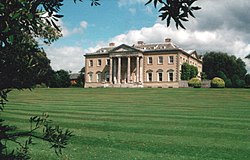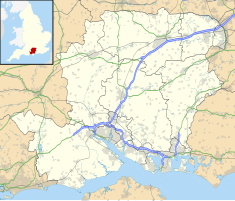
Romsey is a town in the Test Valley district of Hampshire, England. The town is situated 7 miles (11 km) northwest of Southampton, 11 miles (18 km) southwest of Winchester and 17 miles (27 km) southeast of Salisbury. It sits on the outskirts of the New Forest, just over 3 miles (4.8 km) northeast of its eastern edge. The population of Romsey was 14,768 at the 2011 census.

Earl Mountbatten of Burma is a title in the Peerage of the United Kingdom, created in 1947 for Rear Admiral Louis Mountbatten, who in 1946 had been created the first Viscount Mountbatten of Burma. He was later promoted to Admiral of the Fleet.
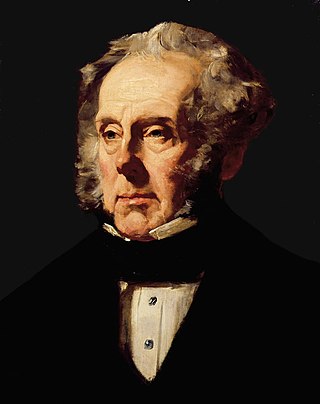
Viscount Palmerston was a title in the Peerage of Ireland. It was created on 12 March 1723 for Henry Temple, who subsequently represented East Grinstead, Bossiney and Weobley in the British House of Commons. He was made Baron Temple, of Mount Temple in the County of Sligo, at the same time, also in the Peerage of Ireland. He was succeeded by his grandson, the 2nd Viscount, who represented seven constituencies in the House of Commons and served as a Lord of the Admiralty and Lord of the Treasury. On his death the titles passed to his son, the 3rd Viscount, who became a distinguished politician and served three times as Foreign Secretary and twice as Prime Minister of the United Kingdom. At his death in 1865 the 3rd Viscount was granted a state funeral, the fourth non-royal to be given this honour. Lord Palmerston was childless and the barony and viscountcy became extinct on his death.

Earl of Shaftesbury is a title in the Peerage of England. It was created in 1672 for Anthony Ashley-Cooper, 1st Baron Ashley, a prominent politician in the Cabal then dominating the policies of King Charles II. He had already succeeded his father as second Baronet of Rockbourne in 1631 and been created Baron Ashley, of Wimborne St Giles in the County of Dorset, in 1661, and he was made Baron Cooper, of Paulett in the County of Somerset, at the same time he was given the earldom.

William Francis Cowper-Temple, 1st Baron Mount Temple, PC, known as William Cowper before 1869 and as William Cowper-Temple between 1869 and 1880, was a British Liberal statesman.

Baron Mount Temple was a title that was created twice in British history, both times in the Peerage of the United Kingdom. The first creation came on 25 May 1880 when the Liberal politician the Honourable William Cowper-Temple was made Baron Mount Temple, of Mount Temple in the County of Sligo. He was born William Cowper, the second son of Peter Clavering-Cowper, 5th Earl Cowper by his wife the Honourable Emily, sister of the 2nd Viscount Melbourne. Emily married as her second husband the 3rd Viscount Palmerston, a man who would serve as British prime minister. Lord Palmerston, an Anglo-Irish peer, died in 1865 when the viscountcy and his junior title of Baron Temple, of Mount Temple, became extinct. Emily died 11 September 1869, leaving her second husband's estates, including Broadlands in Hampshire, to her second son, William, who thereupon adopted by royal licence the surname Cowper-Temple, in whose favour the Mount Temple title was revived in 1880. William was married to Georgina Tollemache.
Norton Louis Philip Knatchbull, 3rd Earl Mountbatten of Burma, known until 2005 as Lord Romsey and until 2017 as the Lord Brabourne, is a British peer. He is a second cousin of King Charles III.

Brocket Hall is a neo-classical country house set in a large park at the western side of the urban area of Welwyn Garden City in Hertfordshire, England. The estate is equipped with two golf courses and seven smaller listed buildings, apart from the main house. The freehold on the estate is held by the 3rd Baron Brocket. The house is Grade I-listed.

Sadler's Mill, also referred to as Saddlers Mill, is a watermill in Romsey, Hampshire, England. It is probably the best known of Romsey's surviving mills and is apparently the only mill to be developed on the main course of the River Test. The existence of Sadler's Mill is first recorded in the 16th century, when it was owned by the manor of Great and Little Spursholt. Functioning as a corn and grist mill, it has passed through a succession of owners including Lord Palmerston who rebuilt it in 1747 and sold it in 1777 to one Benjamin Dawkins. Following another succession of owners it returned to the Broadlands estate in 1889. Milling ceased in 1932, when the mill building became redundant. The Broadlands estate sold the building in 2003, at which point it was close to collapse having been derelict for many years. Anthony and Sarah de Sigley, restored the building in 2005, rebuilding much of the original structure. During the restoration evidence of an earlier structure was found; carbon-14 dating established the age of this to be c. 1650. The restoration was completed by Dave Northway and Amanda Deeming, the new owners from 2008 onwards.
Henry Temple, 2nd Viscount Palmerston, FRS, was a British politician.
Henry Temple, 1st Viscount Palmerston, of East Sheen, Surrey and Broadlands, Hampshire, was an Anglo-Irish landowner and Whig politician who sat in the British House of Commons from 1727 to 1747.
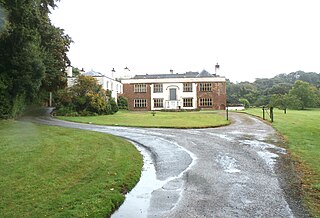
Orchard Wyndham is a historic manor near Williton in Somerset, centred on the synonymous grade I listed manor house of Orchard Wyndham that was situated historically in the parish of Watchet and about two miles south of the parish church of St Decuman's, Watchet. Parts of the manor house are medieval. It has been owned for more than 700 years by the prominent Wyndham family, who continue there as of 2015.
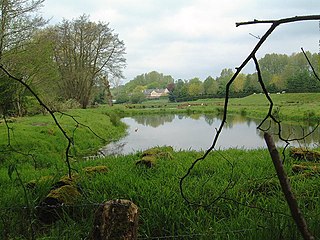
Kerswell Priory was a small Cluniac priory in the parish of Broadhembury in Devon, England.

Humphrey Sydenham, "The Learned", of Combe, Dulverton in Somerset, and of Nutcombe in Devon, was a Tory MP for Exeter, in Devon, between 1741 and 1754.

Classiebawn Castle is a country house built for The 3rd Viscount Palmerston (1784–1865) on what was formerly a 4,000-hectare (10,000-acre) estate on the Mullaghmore Peninsula near the village of Cliffoney, County Sligo, in the Republic of Ireland. The current castle was largely built in the late 19th century.

Combe is a historic estate in Somerset, England, situated between the town of Dulverton and the village of Brushford.
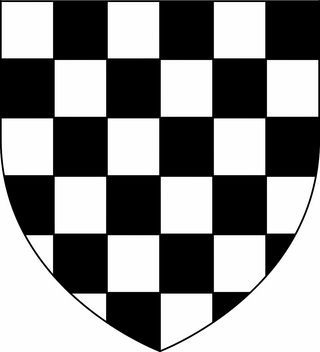
Sir John St Barbe, 1st Baronet, of Ashington, Somerset and Broadlands, Hampshire, was Member of Parliament for Ilchester in 1681. He was created a baronet on 30 December 1662 at the age of 7.

Rev. Humphrey Sydenham, "Silver Tongue Sydenham", was a royalist divine, famous for his sermons.

Muriel Emily Ashley, Lady Mount Temple, also known as Molly Mountemple, was a British aristocrat. She was first married to Arthur Forbes-Sempill, a military officer and younger son of William Forbes-Sempill, 17th Lord Sempill. After their divorce in 1914, she married Wilfrid Ashley, who would later be created Baron Mount Temple in 1932. As the wife of Lord Mount Temple, she was the stepmother of Edwina Mountbatten, Countess Mountbatten of Burma and Mary Cholmondeley, Lady Delamere. She was unpopular with her stepchildren, and described as "wicked" and "unkind" by friends of the family. She managed the family's estate Broadlands and two London town houses in Westminster. A bathroom in their second town house, done in the Art Deco style, was called "Lady Mount Temple's Crystal Palace" by the British press.

Romsey Town Hall is a municipal building in the Market Place in Romsey, Hampshire, England. The structure is the meeting place of Romsey Town Council.
